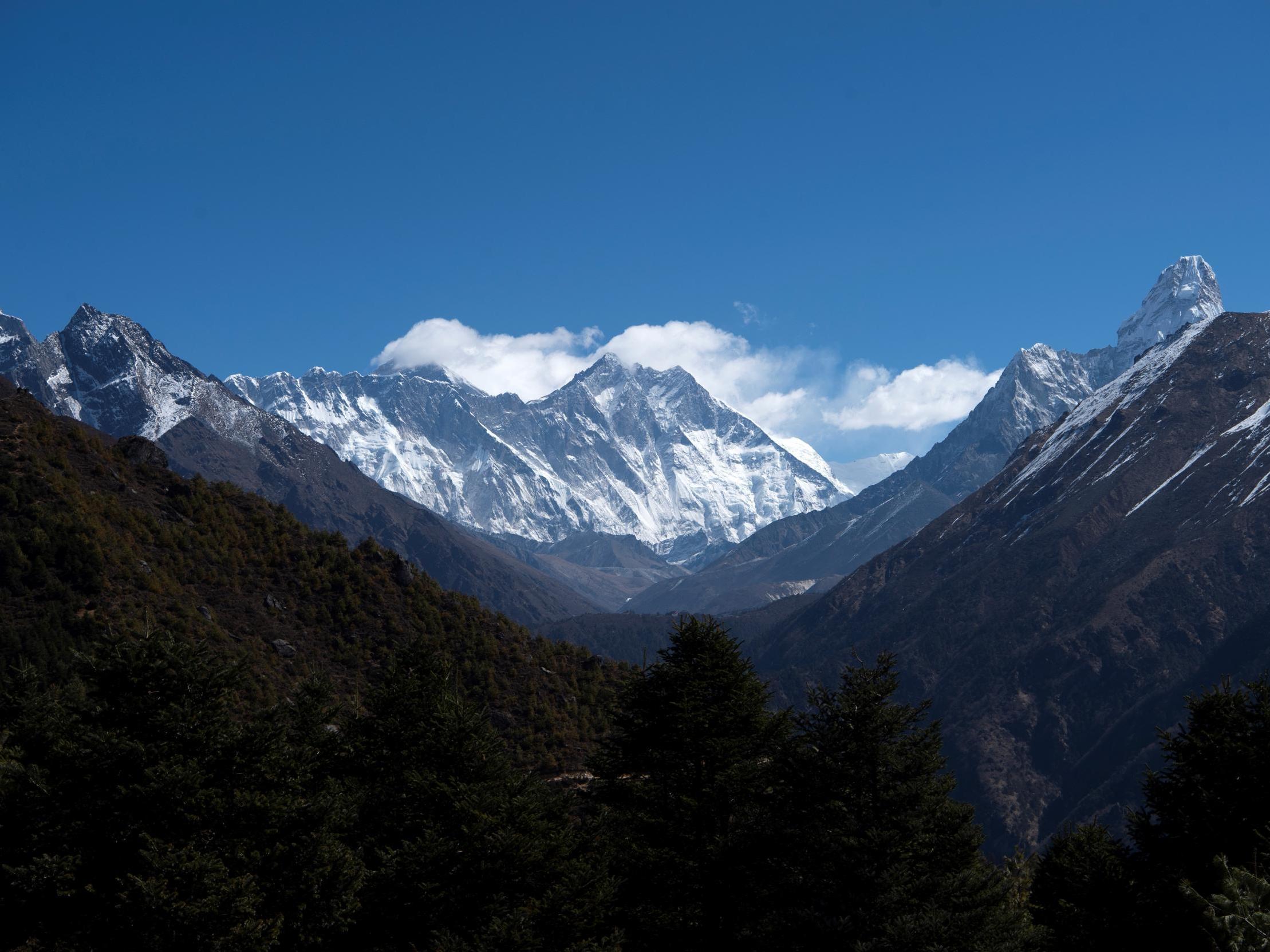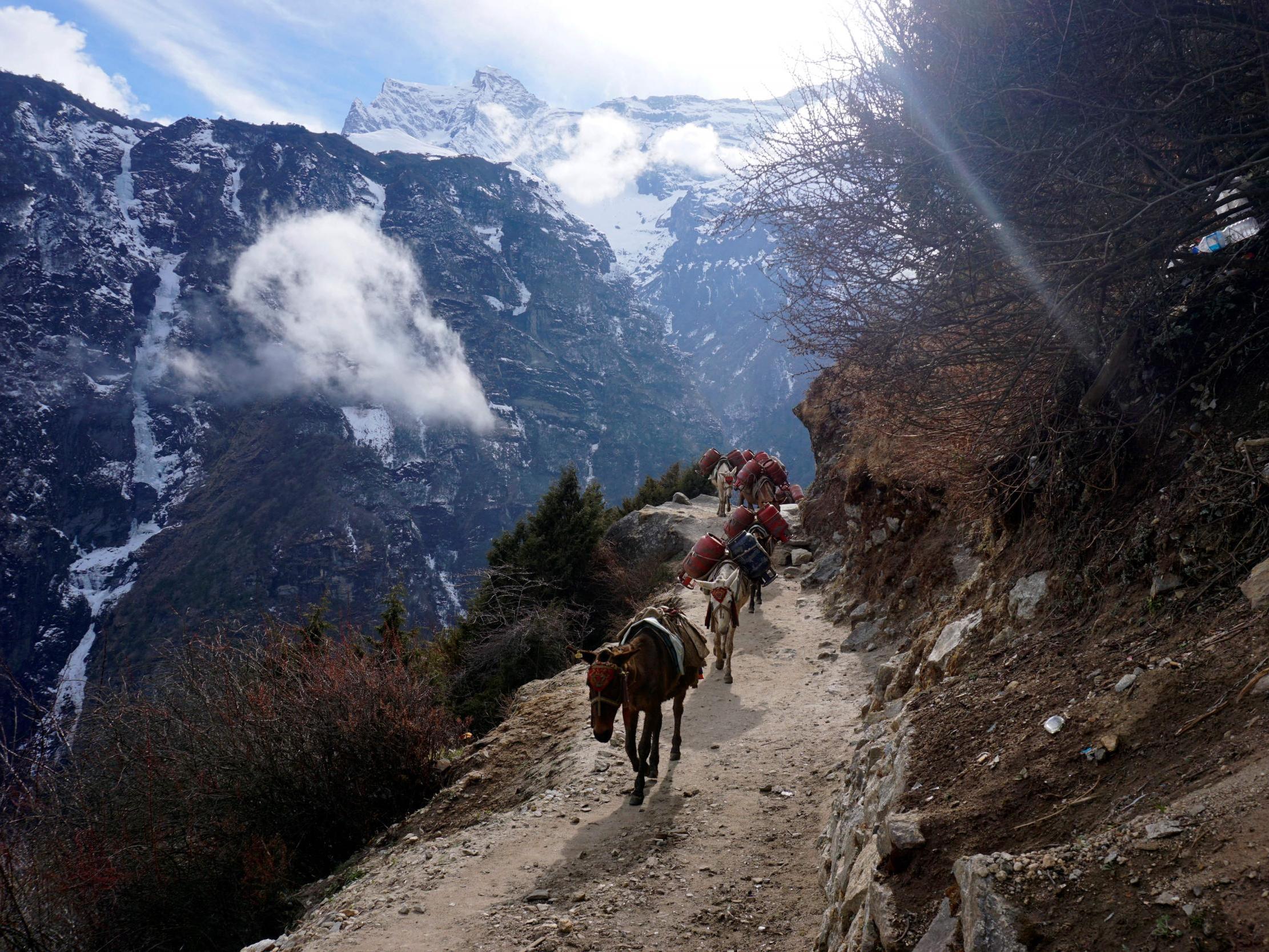Coronavirus is giving Mount Everest a much needed break from humanity
It seems that this season the world’s highest peak will have some much needed recovery time, writes Yana Wengel

Your support helps us to tell the story
From reproductive rights to climate change to Big Tech, The Independent is on the ground when the story is developing. Whether it's investigating the financials of Elon Musk's pro-Trump PAC or producing our latest documentary, 'The A Word', which shines a light on the American women fighting for reproductive rights, we know how important it is to parse out the facts from the messaging.
At such a critical moment in US history, we need reporters on the ground. Your donation allows us to keep sending journalists to speak to both sides of the story.
The Independent is trusted by Americans across the entire political spectrum. And unlike many other quality news outlets, we choose not to lock Americans out of our reporting and analysis with paywalls. We believe quality journalism should be available to everyone, paid for by those who can afford it.
Your support makes all the difference.For the second time in five years, the snowy slopes of Everest will lie empty and silent.
On 11 March, China suspended all climbing expeditions from the Tibetan side due to the coronavirus pandemic. Neighbouring Nepal supported the decision and followed suit, suspending the climbing season on its side of the mountain. Once again, as witnessed in 2015 when devastating earthquakes hit the region, no human being will summit the world’s highest peak this season.
Covid-19 has had an enormous economic impact across the globe in terms of tourism. Adventure tourism is the backbone of Nepal’s economy, and this season’s shutdown will affect the livelihoods of around a million people. Not only will mountain guides and sherpas be affected, but also those who work in shops, restaurants, transportation, hotels, tea houses, B&Bs and other tourism-related businesses.
Summiting Everest is a dangerous endeavour, and after last year’s disastrous “traffic jam” on the mountain, which led to the deaths of 11 climbers, this year’s coronavirus health risks cannot be ignored. Mountaineering is a thrilling and challenging sport, but in Nepal it is also a business – and the complex, multifaceted Everest climbing industry supports thousands of jobs. In 2019, Nepal’s tourism industry generated 240 billion Nepali rupees (about £1.6bn).
The 2018 and 2019 climbing seasons set record numbers for Everest summits. Perhaps after the shocking scenes of summit overcrowding in 2019, 2020 will now be the season that the holy Chomolungma – as the Tibetans call their mountain – will take a well-earned rest and recover from the increasingly commercialised expeditions that cause excessive amounts of traffic, rubbish and human waste.
It seems that the industry has accepted the government’s decision to suspend the season with both gratitude and concern. Serku Sherpa, a mountain and trekking guide from Kathmandu, voiced his support for the move: “I would like to thank Nepal’s government for decision to stop issuing climbing permits in this critical situation. At the same time, I would like to thank those people who cancelled their adventures activities immediately and appreciated the government’s action against the virus.”
Jane Markova, a guide from Russia who brings tourist groups to trek in the Everest region twice a year, says that although she has lost this season’s income, she acknowledges that Everest’s environment has shown signs of distress, and will now have time to “detox”.
For a country like Nepal, with its vulnerable population and fragile medical system, banning tourists and travel is the safest option.
After the disaster of last year’s season, Nepal’s government revised its climbing policy and created new rules.
Now climbers have to prove they possess high-altitude mountaineering experience (over 6,500m on a peak in Nepal) and provide evidence of sufficient training and good health. Government-approved tourism companies must now have at least three years’ experience in organising expeditions and only Nepalese citizens can be leaders, guides and altitude workers.
This enforced hiatus can give the country some valuable time to think about the other changes it wants to make to its mountain tourism industry. Perhaps policy can now shift from a focus on profit to more sustainable management that can benefit the environment, Nepalese communities and tourists alike.
The government could implement a campaign that puts to good use small-scale local expedition outfits to keep sherpas and tour guides occupied. Projects could aim to improve infrastructure such as building roads and creating public rubbish disposal and toilet facilities, which would also benefit locals.
Mountain tourism workers could also help maintain and improve paths and campsites, and most importantly, remove the huge amounts of rubbish produced by climbing expeditions, which leave mountainsides and base camps strewn with detritus.

The coronavirus has had a profound and wide-ranging impact on people, mobility and economies around the world, but the positive impact of lockdown measures on the environment have also been reported.
Air quality has improved across some of the busiest, most congested cities in the world. At the beginning of February, Nasa and the European Space Agency’s pollution-monitoring satellites recorded a substantial decrease in nitrogen dioxide (the gas emitted into the air from burning fuel) over China.
In March, Venice’s canals ran clear as boats remained tied up after tourists were kept away.
And at the beginning of April, for the first time in 30 years, residents in northern India reported seeing the snow-capped Dhauladhar range of the Himalayas 200km away due to a drop in air pollution.
But these are probably just short-term positive effects on the environment and thought must be given to what happens after the pandemic subsides.
Perhaps Everest will also reap some benefits from this unforeseen break from intensive tourism, and its environment will have time to regenerate and recover.
Yana Wengel is an associate professor in tourism and geography at Hainan University, China. This article first appeared on The Conversation
Join our commenting forum
Join thought-provoking conversations, follow other Independent readers and see their replies
Comments